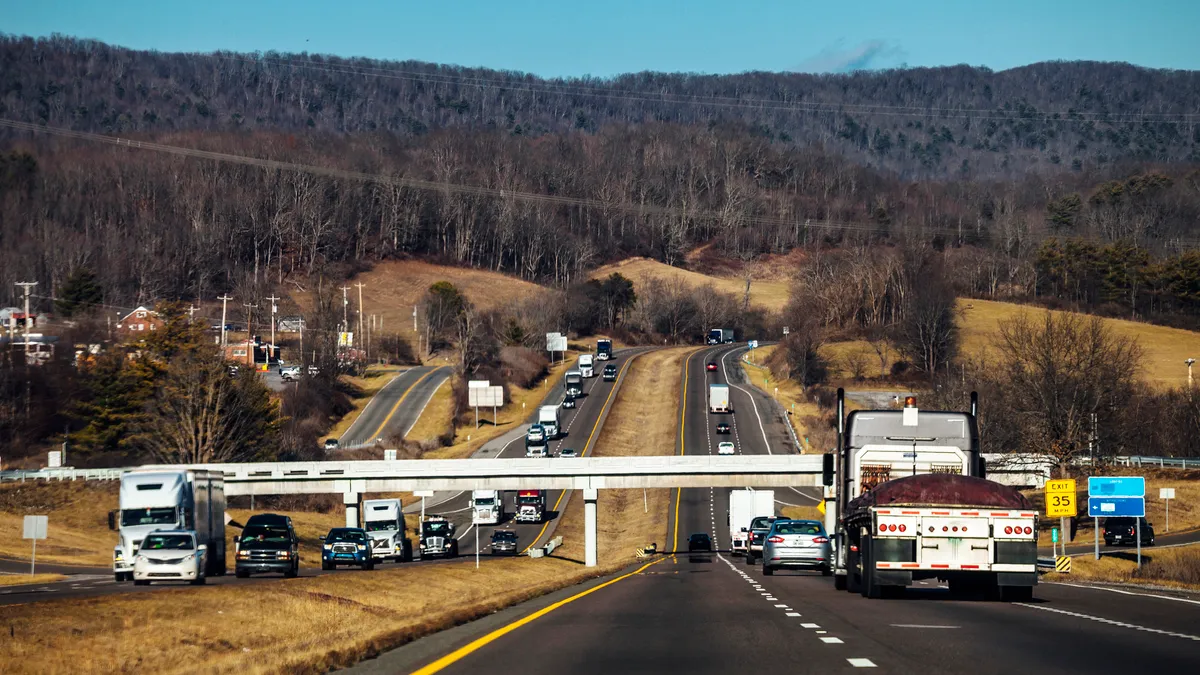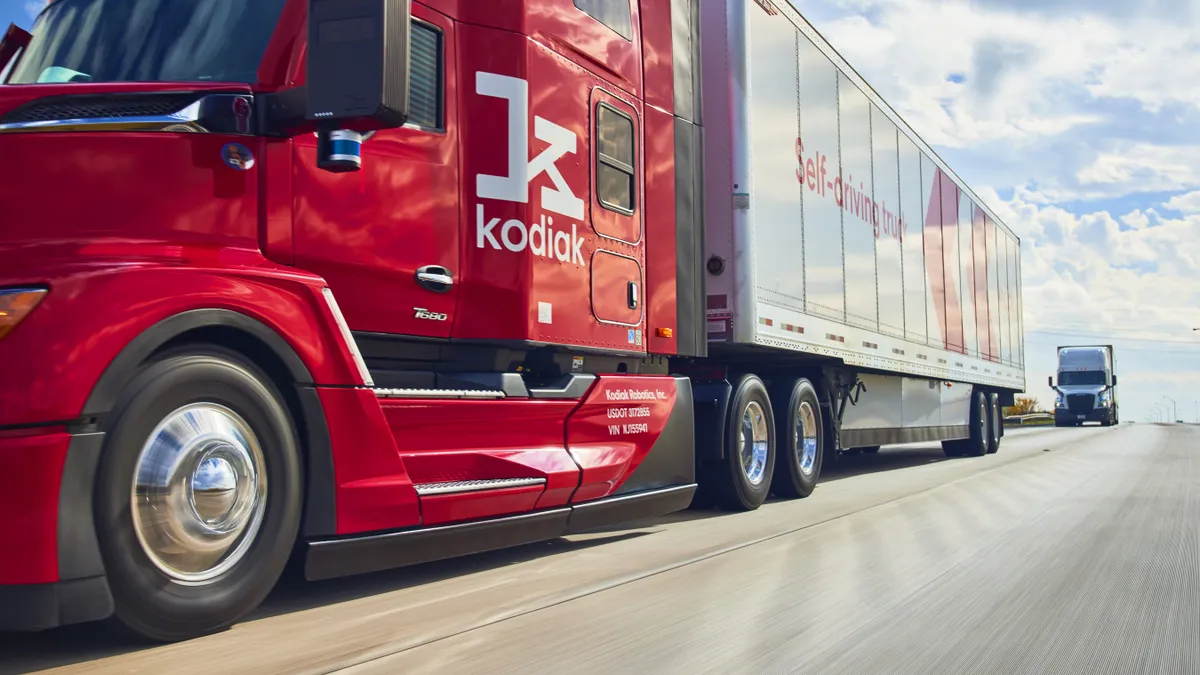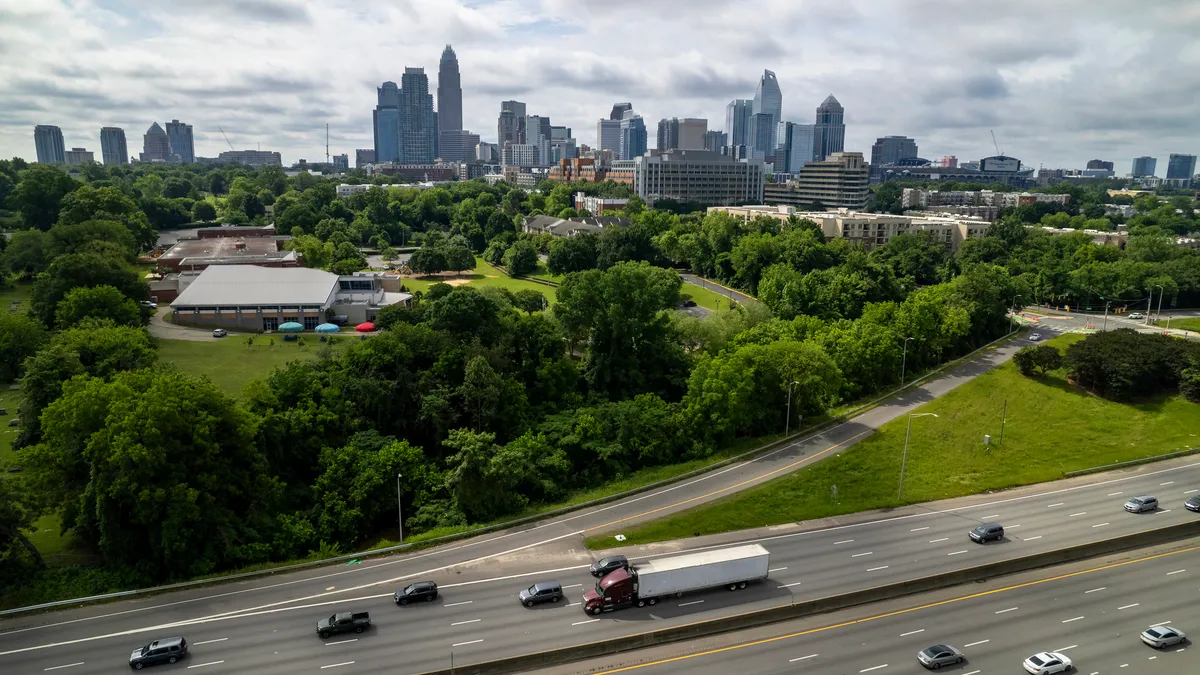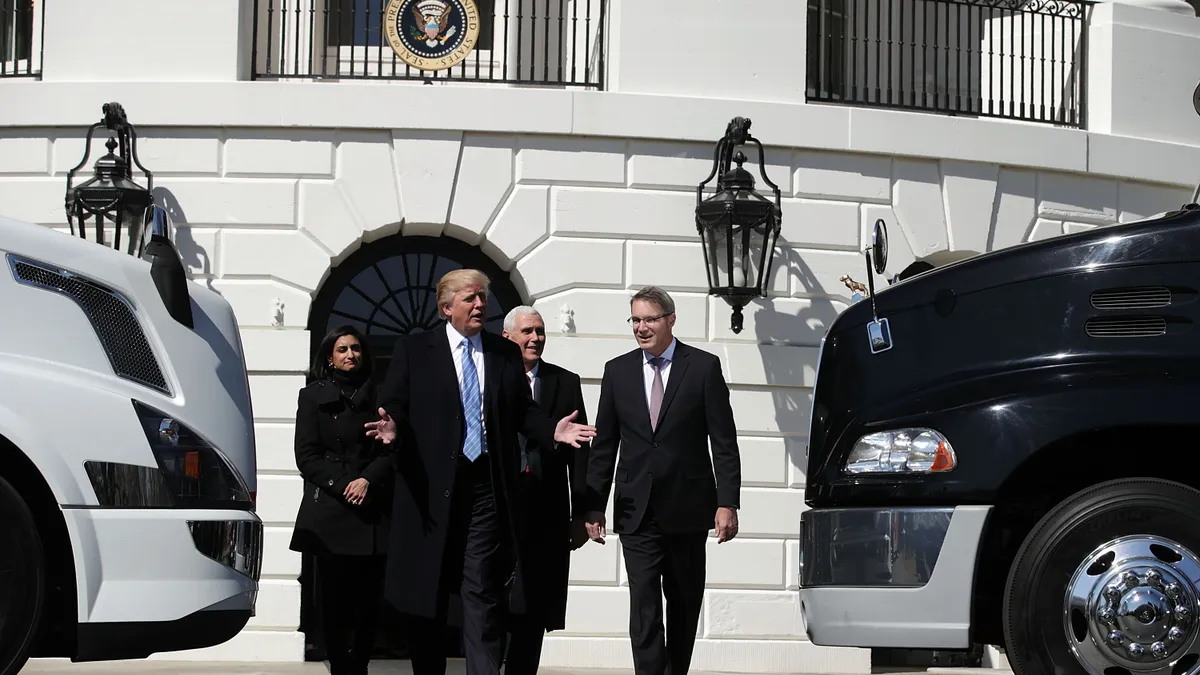Congestion is perhaps the biggest bane of the trucking industry.
The American Transportation Research Institute listed the nation's Top 100 congestion sites that involve trucks, in a report released Feb. 24
The intersection of I-95 and State Road 4 in Fort Lee, New Jersey, was the nation's top bottleneck, for the third-consecutive year. Cincinnati, Ohio's bottleneck at I-71 and I-75 came in second.
ATRI's top 10 truck bottlenecks
| Rank | Location |
|---|---|
| 1 | Fort Lee, NJ: I-95 at SR 4 |
| 2 | Cincinnati, OH: I-71 at I-75 |
| 3 | Atlanta, GA: I-285 at I-85 (North) |
| 4 | Atlanta, GA: I-20 at I-285 (West) |
| 5 | Houston, TX: I-45 at I-69/US 59 |
| 6 | Chicago, IL: I-290 at I-90/I-94 |
| 7 | Chattanooga, TN: I-75 at I-24 |
| 8 | St. Louis, MO: I-64/I-55 at I-44 |
| 9 | Rye, NY: I-95 at I-287 |
| 10 | San Bernardino, CA: I-10 at I-15 |
Source: American Transportation Research Institute
In April 2020, the American Trucking Associations ran an ad noting the average commuter spends more than 40 hours a year stuck in traffic.
For the trucking industry, the accumulated time wasted is a big cost. In the last estimate, the trucking industry lost almost $75 billion fighting congestion or stuck in traffic jams, with 1.2 billion hours of productivity lost. ATRI estimated that translated to "425,533 commercial truck drivers sitting idle for a working year," according to a 2018 report.
Generally, ATRI officials believe the bottlenecks and congestion are caused by a simple problem: The roads and interchanges at the worst spots are inadequate for the level of truck-and-car traffic. They are either ill-designed for such traffic, or need more lanes. The fixes, such as redesigns and new construction, can sometimes themselves cause bottlenecks, according to the report, as when crews have to slow traffic down.
ATRI officials pointed to the intersection of I-65 at I-64/1-71 in Louisville, Kentucky. That interchange was ranked No. 4 in 2017 as new road-and-design construction commenced. The construction ended and now that location is ranked at No. 190 in the latest report, according to ATRI officials.
Sometimes the bottlenecks ease up and traffic zips through at a good clip. In early 2020, the pandemic's lockdowns and shutdowns eased congestion across the nation. Research firms such as Inrix noted how quickly trucks were making it through the bottlenecks. A year ago, in a special report, ATRI noted "unprecedented" truck movement through the nation's bottlenecks.
But that did not last.
"Unfortunately, congestion continues to impact our operations and affect our drivers’ ability to deliver for America," said Hugh Ekberg, CRST International president and CEO, in a statement emailed out with the ATRI results.
3 ways to deal with pesky congestion
ATA believes part of the medicine needed in infrastructure fixes in the form of a large federal bill. President Joe Biden said he also believes an infrastructure bill would ease congestion. He has proposed a $2 trillion price tag.
But in the meantime, fleets have to use their tools and tactics to get around the highway bottlenecks and other congestion.
1. Trust driver knowledge
Cargo Transporters uses the experience of its drivers and its customers to avoid traffic, according to Jerry Sigmon, COO of Cargo Transporters, a 2,000-truck fleet.
Cargo Transporters picks up much of its cargo from the Carolinas and heads out to the various contiguous 48 states. Its regular customers make it possible for Cargo Transporters to have consistent lanes throughout the nation. Many of those lanes run through ATRI's list.
One bottleneck is near Washington, D.C., in Fairfax, Virginia. The interchange at I-495 and I-66 only ranks as 97th on ATRI's list, but Sigmon said the D.C. metro area can be clogged at times.
"There is a time you want to be around D.C., and a time you don't," said Sigmon.
Thus, timing is a strategy for fleets. Knowing when a bottleneck or other type of regular traffic problem will happen is how fleets avoid wasting time or being late with freight. For Cargo Transporters, the trick is not technology used back at headquarters by managers — but trusting in the drivers.
"Our drivers have the most information," said Sigmon, adding that the drivers know when lanes will be congested and when known bottlenecks will materialize.
2. Work with shippers, receivers on parking and drop trailers
Sigmon said drivers and the fleet have ways to work around being on the roads at the wrong times.
One strategy is to ask customers to allow Cargo Transporters to park overnight on their lots. This means the drivers do not have to time arrival in the morning, when they have to fight traffic. Instead, the drivers can get there early, park, rest and have the freight unloaded in the morning — no traffic jams, no morning messes, no bottlenecks.
Shippers have been receptive, Sigmon said.
"Fifty percent of our customers allow us to park," said Sigmon.
Another strategy is for the fleet to drop and hook. That allows truck drivers to drop freight off and pick up a new load at their convenience. Many of Cargo Transporters' customers allow drop-and-hook, said Sigmon.
3. Use on-the-ground data
Decades ago, drivers used CB radios to communicate with each other about traffic jams and bottlenecks. Now they can use their phones for rerouting. One such app is Trucker Path.
The app is a combination of Waze and Yelp!, said Steven Lopez, Trucker Path vice president of business development. Drivers can peruse reviews and locations of truck stops, truck washes, weigh stations and more. Since the app has 1 million active users, Trucker Path can ask for information from the drivers themselves — the best eyes-and-ears of the highway system, Lopez said.
"We're huge on crowd sourcing," said Lopez. "It is very useful. Drivers are [in] one of the most connected industries. They really look out for each other."
Using data from the state departments of transportation, GPS sources and the drivers themselves, Trucker Path is able to communicate in real time with drivers about traffic. If traffic becomes an issue, the app can reroute for drivers, Lopez said.
Ultimately, managing bottlenecks and jams depends on the drivers and fleet managers communicating and using their technology. A bigger fix is not immediately in sight, said Sigmon.
"I wish I could tell you there is a silver bullet," said Sigmon.




















